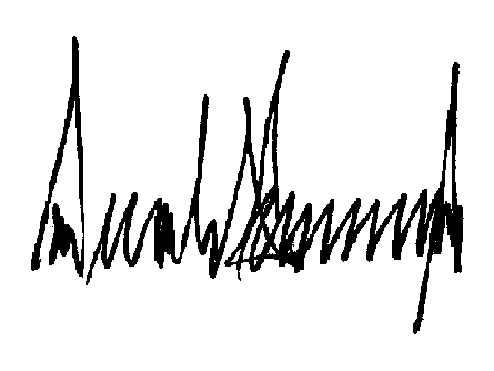Trump Executive Orders
Executive Orders and other Presidential Documents from 47th Trump presidency

🌊National Ocean Month 2025 Proclamation and Business Implications
The proclamation for National Ocean Month 2025 underscores the significance of America's oceans in trade, resource management, and national identity. The President's commitment to maritime dominance includes initiatives for offshore critical minerals and commercial fishing, aiming to enhance U.S. economic interests while encouraging public reflection on ocean value for security, environment, and recreation.
Learn More🚁Executive Order Enhances American Drone Industry and Innovation
Executive Order 14307 aims to enhance the United States' leadership in drone technologies. It outlines policies for the safe integration of unmanned aircraft systems (UAS) into national airspace, promotes domestic production, and establishes initiatives for expanding commercial operations, emphasizing the importance of securing the supply chain and fostering innovation in advanced aviation.
Learn More🛩️Executive Order 14305
Executive Order 14305 focuses on restoring American control over national airspace and enhancing public safety against threats posed by unmanned aircraft systems (UAS). It establishes a Federal Task Force to coordinate regulatory measures, improve enforcement, and aid private infrastructure owners in mitigating drone-related risks, while emphasizing the importance of national security and critical infrastructure protection.
Learn More✈️Executive Order 14304
Executive Order 14304 aims to revitalize U.S. leadership in supersonic flight by removing outdated regulations and promoting innovation. The order mandates the Federal Aviation Administration to repeal flight prohibitions and establish new noise certification standards, enhancing the commercial viability and integration of supersonic aircraft into the National Airspace System. Furthermore, it emphasizes coordinated research and international engagement to align regulatory frameworks globally.
Learn More🔒Executive Order 14306
Executive Order 14306 aims to strengthen U.S. cybersecurity through amendments to previous orders. It highlights persistent threats, particularly from foreign adversaries, and mandates actions involving the establishment of guidance for secure software development and AI vulnerability management to bolster national defense in the digital domain.
Learn More🚫Proclamation Restricting Foreign National Admissions at Harvard
The proclamation by the President addresses national security concerns associated with foreign students at Harvard University, citing failures in compliance with federal regulations. It suspends the entry of foreign nationals seeking to study at Harvard due to issues related to revealing misconduct involving international students, highlighting economic and compliance implications for the university and associated educational programs.
Learn More🚫Proclamation on Foreign Nationals Entry Restrictions and Business Impact
The proclamation restricts the entry of foreign nationals from various countries to enhance national security. It establishes criteria based on inadequate screening and vetting processes. The move aims to prevent potential threats while encouraging cooperation from other nations to improve their information-sharing and identity-management practices.
Learn More🏦OCC Information Collection Renewal
The OCC, as part of its continuing effort to reduce paperwork and respondent burden, invites comment on a continuing information collection, as required by the Paperwork Reduction Act of 1995 (PRA). In accordance with the requirements of the PRA, the OCC may not conduct or sponsor, and the respondent is not required to respond to, an information collection unless it displays a currently valid Office of Management and Budget (OMB) control number. The OCC is soliciting comment concerning the revision to its information collection titled, "Survey of OCC-Supervised Community Banks."
Learn More⚒️Tariff Increases on Steel and Aluminum
This regulation modifies United States import tariffs on aluminum and steel, increasing rates to 50% to address national security concerns. The proclamation reflects ongoing trade policies aimed at protecting domestic industries and is expected to impact import pricing and compliance requirements for businesses engaged in these sectors.
Learn More💰Sequestration Order for Fiscal Year 2026
This document outlines a sequestration order issued by the President, mandating reductions to direct spending budgetary resources for fiscal year 2026. It specifies compliance protocols under the Balanced Budget and Emergency Deficit Control Act, indicating a significant measure to control federal expenditures and its implications on budget allocations across various sectors.
Learn More